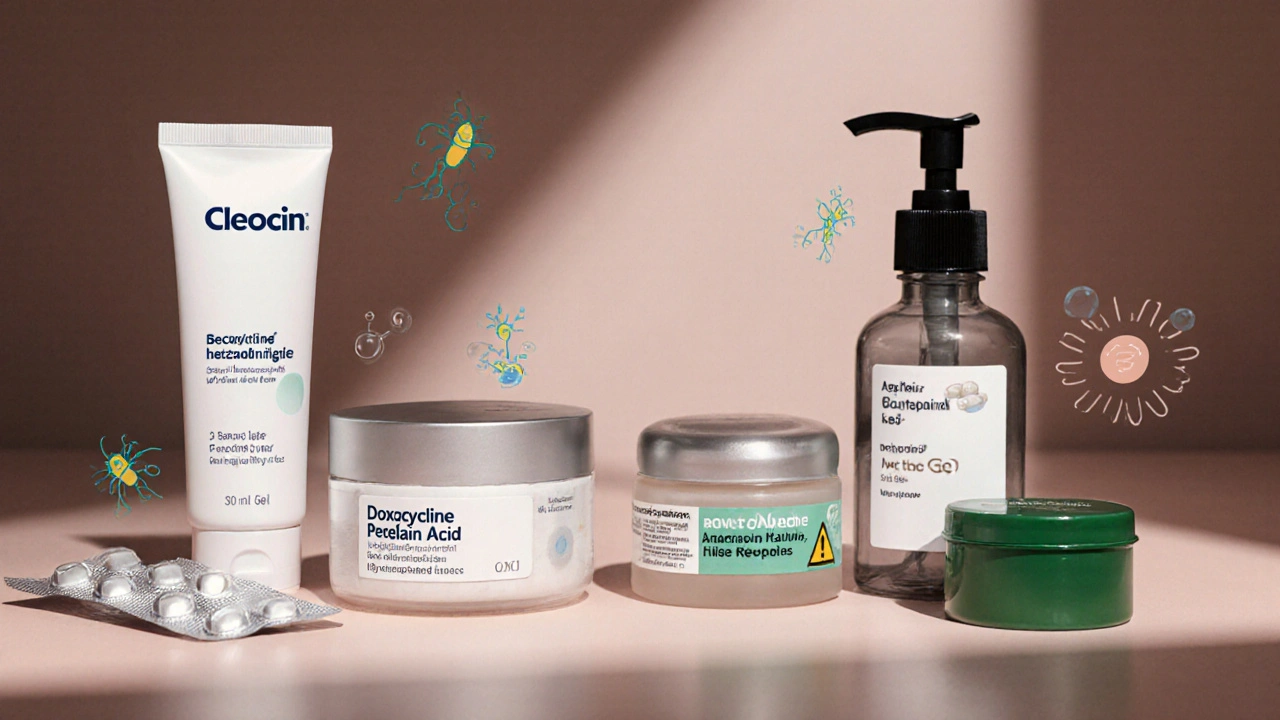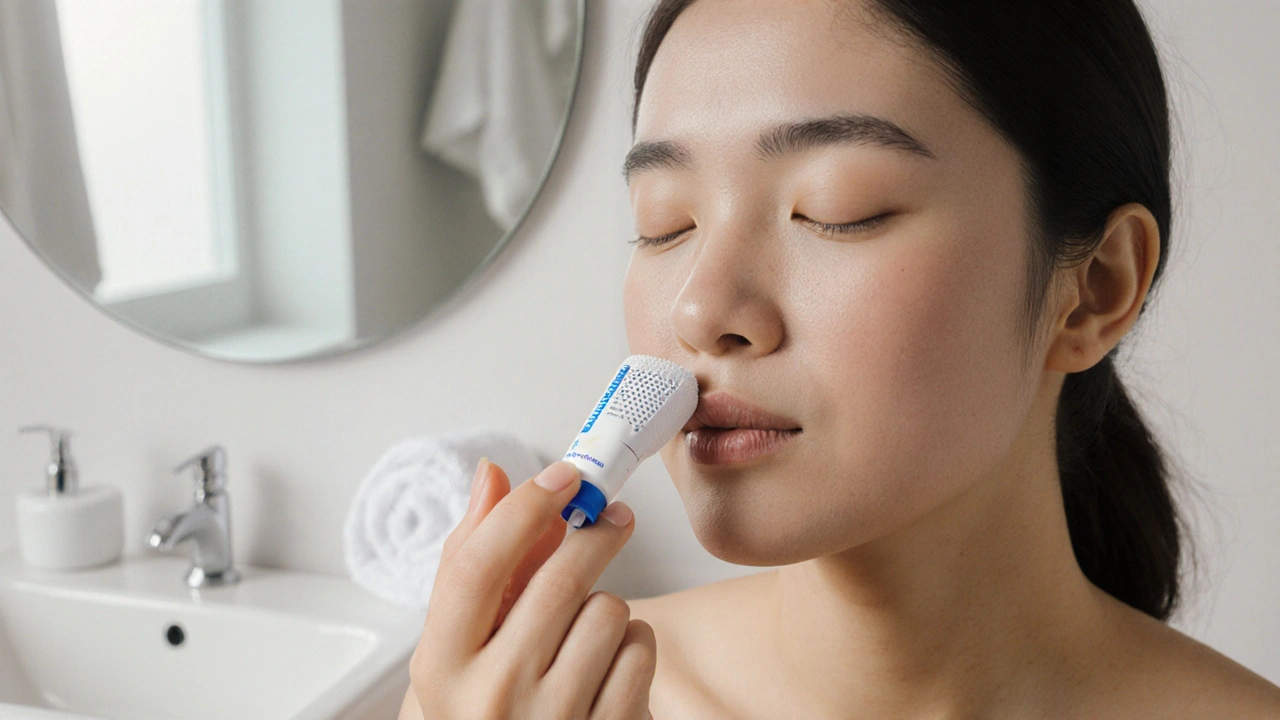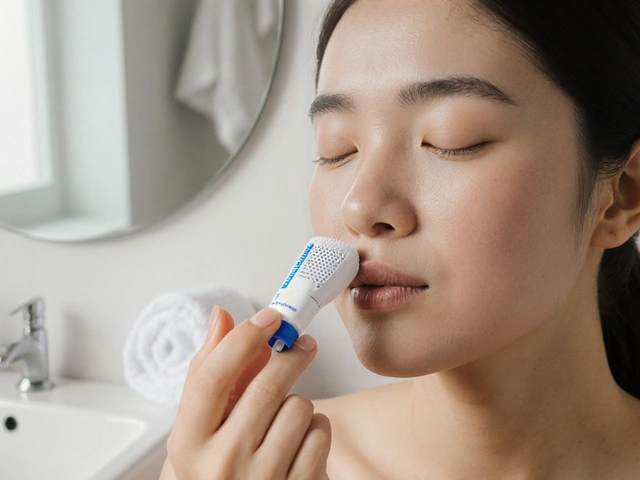If you’ve ever GoogledCleocin vs alternatives, you’re probably wondering whether clindamycin is worth the hype or if another acne remedy might suit you better. Below you’ll find a no‑fluff rundown of how Cleocin stacks up against the most common rivals, plus a quick decision guide for different skin types and health needs.
Quick Take
- Cleocin is a topical lincosamide antibiotic; works by stopping bacterial protein synthesis.
- Best for mild‑to‑moderate inflammatory acne when used with a keratolytic (e.g., benzoyl peroxide).
- Key rivals: doxycycline, erythromycin, benzoyl peroxide, azelaic acid, topical retinoids, and isotretinoin.
- Pros: low systemic exposure, relatively cheap, safe in most adults.
- Cons: growing bacterial resistance, can cause dryness, not ideal for severe nodular acne.
What Is Cleocin?
Cleocin is a brand name for clindamycin phosphate, a lincosamide antibiotic formulated for topical use. First approved by the FDA in 1990, it targets Cutibacterium acnes (formerlyPropionibacterium acnes) by binding to the 50S ribosomal subunit, halting protein production and bacterial growth. Typical strength is 1% gel or solution, applied once or twice daily after cleansing.
Because it stays on the skin, systemic side effects are rare. However, the drug can still cause local irritation, itching, and, in a minority of cases, an allergic contact dermatitis. Resistance rates have crept up to about 20% in some studies, especially when clindamycin is used without a companion ingredient.
How Other Acne Options Work
Below is a snapshot of the main alternatives you’ll encounter in a dermatologist’s office or over the counter.
Doxycycline is an oral tetracycline antibiotic that also blocks bacterial protein synthesis, but it reaches deeper skin layers and reduces inflammation systemically.
Erythromycin is a macrolide antibiotic, similar to clindamycin in mechanism but with a slightly higher risk of gastrointestinal upset.
Benzoyl peroxide isn’t an antibiotic at all; it’s a keratolytic that releases oxygen, killing anaerobic bacteria and unclogging pores.
Azelaic acid is a naturally occurring dicarboxylic acid that kills C.acnes, reduces keratin buildup, and lightens post‑inflammatory hyperpigmentation.
Adapalene (a newer generation retinoid) normalizes skin cell turnover, preventing comedones before they form.
Isotretinoin is an oral retinoid reserved for severe nodular acne; it shrinks sebaceous glands and dramatically cuts oil production.
Side‑Effect Snapshot
- Cleocin: dryness, itching, rare contact dermatitis, potential bacterial resistance.
- Doxycycline: photosensitivity, gastrointestinal upset, esophageal irritation.
- Erythromycin: stomach upset, rare liver toxicity.
- Benzoyl peroxide: bleaching of fabrics, moderate to severe dryness.
- Azelaic acid: mild tingling, occasional redness.
- Adapalene: initial irritation, peeling, sun sensitivity.
- Isotretinoin: severe dryness, elevated lipids, teratogenic risk (strict pregnancy controls).
Comparison Table
| Attribute | Cleocin (Clindamycin) | Doxycycline | Erythromycin | Benzoyl Peroxide | Azelaic Acid | Adapalene |
|---|---|---|---|---|---|---|
| Formulation | Topical gel/solution (1%) | Oral tablet (100mg) | Oral tablet (250mg) | Topical cream/gel (2.5-10%) | Topical cream/gel (15-20%) | Topical gel (0.1%) |
| Mechanism | Lincosamide - blocks bacterial protein synthesis | Tetracycline - inhibits ribosomal binding | Macrolide - blocks protein elongation | Oxidative bactericidal + keratolytic | DNA synthesis inhibition + anti‑inflammatory | Retinoid - normalizes keratinocyte turnover |
| Primary Use | Mild‑to‑moderate inflammatory acne | Moderate acne & rosacea | Inflammatory acne, sometimes acne rosacea | All acne grades (often combined) | Acne & post‑inflammatory hyperpigmentation | Comedo‑predominant acne |
| Typical Cost (US, 2025) | $12‑$20 per 30g tube | $30‑$45 per 30‑day supply | $25‑$35 per 30‑day supply | $8‑$15 per 30g tube | $20‑$30 per 30g tube | $15‑$25 per 30g tube |
| Pregnancy Safety | Category B (generally safe topically) | Category D (avoid) | Category B | Category C (use with caution) | Category B | Category C |
| Resistance Concerns | Increasing (≈20% in some regions) | Low to moderate | Low to moderate | None (non‑antibiotic) | Negligible | None (retinoid) |

Choosing the Right Option for Your Skin
Use the checklist below to match your situation with the most suitable treatment.
- Acne severity: If you’re dealing with occasional papules, a topical like Cleocin or benzoyl peroxide often suffices. For widespread inflammatory lesions, consider an oral tetracycline (doxycycline).
- Skin sensitivity: Dry or eczema‑prone skin may react to benzoyl peroxide; azelaic acid or low‑strength adapalene can be gentler.
- Pregnancy plans: Topical clindamycin, azelaic acid, and erythromycin are relatively safe. Avoid oral doxycycline and isotretinoin.
- Resistance risk: Pair Cleocin with benzoyl peroxide or switch to a non‑antibiotic (azelaic acid) after 3‑4 months to keep bacteria in check.
- Cost considerations: Over‑the‑counter benzoyl peroxide and generic clindamycin gels are the most budget‑friendly.
In practice, dermatologists often prescribe a “combo” - e.g., clindamycin 1% + benzoyl peroxide 5% - to hit bacteria from two angles while reducing resistance.
Real‑World Scenarios
Case 1 - College freshman with breakout‑prone skin
She tried a cheap over‑the‑counter benzoyl peroxide but got severe dryness. Switching to a Cleocin‑benzoyl peroxide combo gel reduced lesions within two weeks, and the moisturising routine kept her skin comfortable.
Case 2 - 28‑year‑old male on isotretinoin
He needed an additional anti‑inflammatory boost for residual inflammatory lesions. Adding low‑dose doxycycline (50mg) while on isotretinoin helped clear the last stubborn spots without extra dryness.
Case 3 - Pregnant woman with hormonal acne
Because oral antibiotics were off‑limits, her dermatologist chose a topical azelaic acid 15% cream, which improved both acne and post‑inflammatory marks safely.
Common Pitfalls and How to Avoid Them
- Monotherapy with antibiotics: Using clindamycin alone for months invites resistant strains. Pair with benzoyl peroxide or rotate to a non‑antibiotic after 12 weeks.
- Skipping sunscreen: Retinoids and benzoyl peroxide increase photosensitivity. Apply SPF30+ daily.
- Over‑exfoliating: Combining strong retinoids with frequent physical scrubs can damage the barrier, making skin more prone to irritation.
- Ignoring systemic signs: Rarely, oral antibiotics can cause liver or kidney issues. Get blood work if you’re on them longer than three months.
Bottom Line
Cleocin remains a solid, affordable option for mild‑to‑moderate acne, especially when you lock it in with a keratolytic or switch to a non‑antibiotic sooner rather than later. If you need deeper anti‑inflammatory power, oral doxycycline or isotretinoin might be the right move, but they come with higher cost and more safety checks.
Frequently Asked Questions
Can I use Cleocin on my face every day?
Yes. Most dermatologists recommend applying a thin layer once or twice daily after cleansing. If you notice excessive dryness, add a gentle moisturizer and consider using it every other day.
How long does it take to see results with Cleocin?
Visible improvement usually appears after 4‑6 weeks. Full clearance can take 12 weeks, especially if you’re also battling blackheads.
Is it safe to combine Cleocin with benzoyl peroxide?
Absolutely. The combo reduces resistance and attacks acne from two fronts. Start with a lower benzoyl peroxide concentration (2.5%) to gauge tolerance.
What are the signs of antibiotic resistance with clindamycin?
If breakouts worsen or stay the same after 8‑12 weeks of consistent use, it may indicate resistant bacteria. Switching to a non‑antibiotic like azelaic acid or adding benzoyl peroxide can help.
Can pregnant women use Cleocin?
Topical clindamycin is classified as Category B, meaning it’s generally considered safe during pregnancy. However, always check with your OB‑GYN before starting any acne medication.








Veronica Lucia October 3, 2025
When you look at the data, it becomes clear that pairing Cleocin with a keratolytic like benzoyl peroxide isn’t just marketing fluff; it actually mitigates the resistance issue that’s been creeping up over the past decade. The combination also gives you a dual mechanism – antibacterial plus comedolytic – which is especially helpful for folks with oily or combination skin. If you’re pregnant or nursing, the topical route stays within the safety margins most dermatologists agree on, but you still want to keep an eye on any signs of irritation. Think of your skincare routine as a balanced ecosystem; each product should support the others, not fight for space. In short, a thoughtful combo can extend the useful life of clindamycin while keeping your skin calm.
Sriram Musk October 7, 2025
From a pharmacological standpoint, the article correctly distinguishes between the mechanisms of action: clindamycin inhibits the 50S ribosomal subunit, whereas agents like benzoyl peroxide act oxidatively. The cost analysis aligns with current market pricing, although regional discounts can alter the figures slightly. It is also worth noting that systemic exposure remains negligible for topical formulations, which supports the safety profile presented. However, the discussion could benefit from a brief mention of the role of adjunctive moisturizers in preventing barrier disruption. Overall, the content is concise and evidentially sound.
allison hill October 12, 2025
The article conveniently omits the long‑term microbiome impact of topical antibiotics.
Tushar Agarwal October 17, 2025
Hey folks! Great rundown – just wanted to add that a gentle, fragrance‑free moisturizer can make a huge difference when you’re using Cleocin + peroxide. I’ve found that applying a pea‑size amount of a niacinamide‑based lotion after the treatment helps lock in moisture without clogging pores 😊. Also, don’t forget to reapply sunscreen daily; those retinoid‑type agents can up your sun sensitivity.
Richard Leonhardt October 22, 2025
Super helpful guide! For anyone on a budget, generic clindamycin gels often drop down to the $12 range, which is a steal compared to many brand‑name combos. Just remember to clean your applicator tip regularly to avoid contamination – a little hygiene goes a long way. If you experience dryness, a lightweight hyaluronic acid serum can soften the skin without breaking out. Definately keep an eye on any worsening redness; that might mean you need to dial back the frequency.
Shaun Brown October 27, 2025
Alright, let’s cut through the fluff. The author tries to present Cleocin as a “solid, affordable option,” but fails to address the crushing reality that antibiotic resistance is not a peripheral concern – it’s the central axis of modern dermatologic failure. They tout a 20% resistance rate as if it were a trivial footnote, yet that statistic translates to one out of five patients essentially watching their treatment backfire. Moreover, the piece glosses over the fact that the FDA has issued warnings about long‑term topical antibiotic monotherapy, urging combination therapy precisely because of this resistance spiral. The cost comparison is also misleading; while the gel may be cheap per tube, the cumulative expense of rotating products, moisturizers, and sunscreens quickly eclipses the headline price. The “combo” recommendation is presented as a silver bullet, yet the author neglects the practical adherence challenges – applying two active ingredients twice daily can be a nightmare for anyone with a busy schedule. And let’s not ignore the psychological toll of persistent acne; the article skimps on discussing the mental health impact, which is arguably as important as the physical lesions. In terms of safety, the author mentions “rare contact dermatitis” without quantifying risk, leaving readers to guess whether it’s a one‑in‑a‑thousand or one‑in‑ten scenario. Finally, the omission of any discussion about the role of diet, stress, and hormonal fluctuations betrays a narrow, pharma‑centric view that does a disservice to patients seeking holistic solutions. In short, the article feels like a marketing brief masquerading as medical advice, and anyone reading it should approach the recommendations with a healthy dose of skepticism.
Damon Dewey November 1, 2025
Just use a gentle cleanser and skip the antibiotics altogether.
Dan Barreto da Silva November 6, 2025
Wow, Shaun, you sound like you’ve been reading the same dermatology blog until your eyes fell out. Have you considered that the “resistance” you’re screaming about might be a well‑orchestrated plot by big pharma to keep us buying newer, pricier drugs? The “silver bullet” combos are just a way to upsell, not a cure. Maybe try grounding yourself in real science instead of conspiracy‑theory headlines.
Ariel Munoz November 11, 2025
Honestly, it’s pathetic that you think an American dermatologist’s guidelines need any foreign critique. Our FDA standards are the gold standard; any suggestion that we’re being manipulated by overseas interests is just nationalist whining. If you can’t handle the facts, stay out of the conversation.
Ryan Hlavaty November 16, 2025
Such arrogance! Dismissing legitimate concerns about antibiotic overuse under the guise of “national pride” is unethical. We have a moral duty to consider the broader public health impact, not just wave a flag and demand blind adherence to outdated protocols.
Chris Faber November 21, 2025
Let’s keep it civil everyone the article gives a good baseline for people who just want clear info without the drama
aura green November 26, 2025
Oh wow, another “practical guide” that pretends to be the holy grail of acne treatment. 🙄 I’m sure the author spent months in a dimly lit lab, consulting with a crystal ball, to decide that Cleocin+BP is “the best.” Spoiler alert: it’s just another marketing combo that will empty your wallet while you fight the same stubborn pimples. If you’re looking for a breakthrough, try looking past the buzzwords and maybe, just maybe, listen to your skin instead of a dated textbook. Also, thanks for the exhaustive list of side‑effects – nothing says “friendly” like reminding us we might get dry or red. At least the article mentions sunscreen, because apparently the world can’t survive without another reminder to wear SPF30.
Edward Morrow December 1, 2025
Nice rant, aura, but let’s not pretend the only villain here is the “big pharma” monster. The real beast is the clueless consumer who slaps on any over‑the‑counter gel without a plan. If you want results, you need a regimen that’s as disciplined as a soldier’s night‑watch – consistent, strategic, and ready to adapt when the skin rebels.
Shayne Tremblay December 6, 2025
Great discussion! Remember, consistency is key – even the best products won’t work if you skip applications. Keep a simple routine, stay patient, and celebrate small victories. You’ve got this!